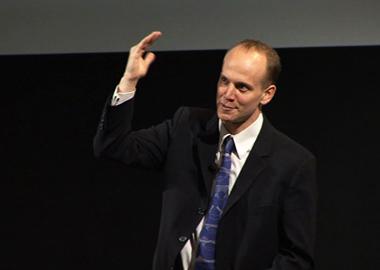
|
Engineering for the Ecological Age: Lessons from History
John Ochsendorf, a structural engineer, “fell in love with archaeology” during college. His senior thesis at Cornell involved a 600-year-old Incan suspension bridge made entirely out of grass. Ochsendorf learned that this apparently primitive structure owed its astonishing longevity to regular rebuilds by the locals (during a community festival), and the use of renewable, biodegradable resources. While Cornell’s engineering faculty couldn’t see the point of this research — “grass bridges over highway overpasses”? -- Ochsendorf realized that historical structures held important lessons for modern building technology. The grass bridge raised several problems that now consume Ochsendorf’s academic and professional life. First, how to consider the whole life of a product when designing it, of particular import since “the 21st century is going to be a wild ride in terms of natural resources,” says Ochsendorf. Some building costs increase over time, consuming material and labor while deteriorating (nb: New York’s 1903 Williamsburg Bridge, with $1 billion in repairs, and still unsafe at any speed). Ochsendorf suggests alternatives: making permanent structures with high quality construction and reusable materials (such as Roman stone arch bridges); very temporary structures, such as the grass bridge, or a Japanese pavilion made out of recycleable paper; or modular structures designed to change over time. Ochsendorf created “a medieval building for the 21st century,” a sustainable home made out of waste clay tiles, rammed earth from local chalk, and a heavy green roof on which sheep graze.  Ochsendorf also studies the integrity of existing historical structures: how to guarantee the safety of a medieval cathedral, or a 19th-century train station. The Pantheon’s stood for 2000 years, a brittle structure that inevitably develops cracks. Engineers today can’t say for sure “if something will fall down.” Ochsendorf is creating engineering tools to vouch for the ...
Video Length: 0
Date Found: August 01, 2009
Date Produced: May 27, 2009
View Count: 1
|